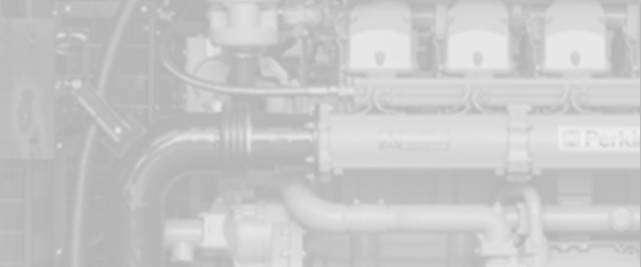Dec . 05, 2024 22:52 Back to list
remove rust from brake drums
How to Remove Rust from Brake Drums A Comprehensive Guide
Rust is a common enemy for any automotive part subjected to the elements, and brake drums are no exception. Over time, exposure to moisture, road salt, and grime can lead to the formation of rust on brake drums, potentially compromising braking performance and safety. This article will guide you through the step-by-step process of removing rust from brake drums, ensuring that your vehicle remains safe and efficient.
Understanding Brake Drums
Brake drums are crucial components of the brake system in many vehicles, particularly older models and those with rear drum brakes. They work by using shoes that press against the inside surface of the drum to create friction, which slows down or stops the vehicle. Rust can accumulate on the surface of the drum, leading to uneven wear, reduced braking efficiency, and even noise during operation. Therefore, regular maintenance and rust removal are essential parts of vehicle upkeep.
Tools and Materials Needed
Before you start, gather the following tools and materials
- Safety goggles and gloves - Wire brush or wire wheel - Sandpaper (medium and fine grit) - Rust remover (chemical or converter) - Brake cleaner - Clean cloths - WD-40 or penetrating oil - Jack and jack stands
Step-by-Step Rust Removal Process
1. Preparation and Safety First Start by parking your vehicle on a flat surface and engaging the parking brake. Wear safety goggles and gloves to protect yourself from debris and harmful chemicals.
2. Lift the Vehicle Using a jack, lift the vehicle and secure it with jack stands. Ensure the vehicle is stable before working underneath or around it.
3. Remove the Wheel and Access the Brake Drum Take off the wheel to access the brake drum. You might need to loosen the lug nuts with a tire iron before lifting the vehicle. After removing the wheel, inspect the brake drum for visible rust.
4. Clean the Drum Before tackling the rust, clean the brake drum using brake cleaner to remove any dust, grease, or grime that may be present. Spray the cleaner liberally and wipe it down with a clean cloth.
remove rust from brake drums

5. Scrub Off the Rust Use a wire brush or a wire wheel attached to a drill to scrub the rust off the surface of the drum. Apply even pressure, focusing on the rusted areas. If the rust is persistent, you might need to use sandpaper—start with medium grit to break down the corrosion, followed by fine grit to smooth the surface.
6. Apply Rust Remover For any remaining rust, apply a rust remover according to the manufacturer's instructions. These products are designed to penetrate and neutralize rust. Allow the rust remover to work for the recommended time.
7. Final Cleaning Once the rust is treated, clean the drum again with brake cleaner to remove any residual rust remover or debris. Wipe the surface with a clean cloth to ensure it is smooth and free of contaminants.
8. Inspect the Drum After cleaning, inspect the drum for any deep pitting or damage. If the surface is significantly worn or compromised, consider consulting a professional for potential replacement.
9. Reassemble the Brake Components Once satisfied with the condition of the drum, reassemble the brake components, reattach the wheel, and lower the vehicle back to the ground.
10. Test Drive After completing the maintenance, take your vehicle for a test drive to ensure that the brakes are functioning properly and that you hear no unusual sounds.
Preventative Measures
To minimize future rust formation, consider the following
- Regular Maintenance Regular inspections and cleanings can prevent rust buildup. - Apply Protective Coating Using high-temperature paint or coatings specifically designed for brake components can help protect against moisture and rust. - Store Vehicle Properly If you store your vehicle in a garage, it can help shield it from the elements, reducing the likelihood of rust.
Conclusion
Removing rust from brake drums is a critical process that ensures your vehicle operates safely and efficiently. By following these steps, you can prolong the life of your brake system and maintain optimal performance. If the rust is extensive or if you’re uncertain about handling the maintenance yourself, don’t hesitate to consult a professional mechanic for assistance. Remember, your safety is paramount, and well-maintained brakes are essential for a reliable driving experience.
-
HINO Industrial Efficiency-Jiangsu Hino Industrial|Productivity Optimization&Cost Reduction
NewsJul.12,2025
-
HINO-¡Ң���ຽ��е��������˾|Advanced Industrial Solutions&Energy Efficiency
NewsJul.12,2025
-
Premium Brake Drum Iveco – Durable Drum Brake Drum & Brake Shoe Solutions
NewsJul.08,2025
-
High-Performance Brake Drum Liza for Enhanced Safety Reliable Drum Brake Drum & Brake Shoe Solutions
NewsJul.08,2025
-
High-Quality Brake Drum MAZ – Durable Drum Brake Drum & Brake Drum and Brake Shoe for Optimal Performance
NewsJul.07,2025
-
High-Quality Brake Drum Kamaz for Reliable Performance Durable Drum Brake Drum & Brake Shoes
NewsJul.07,2025
